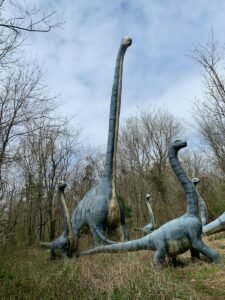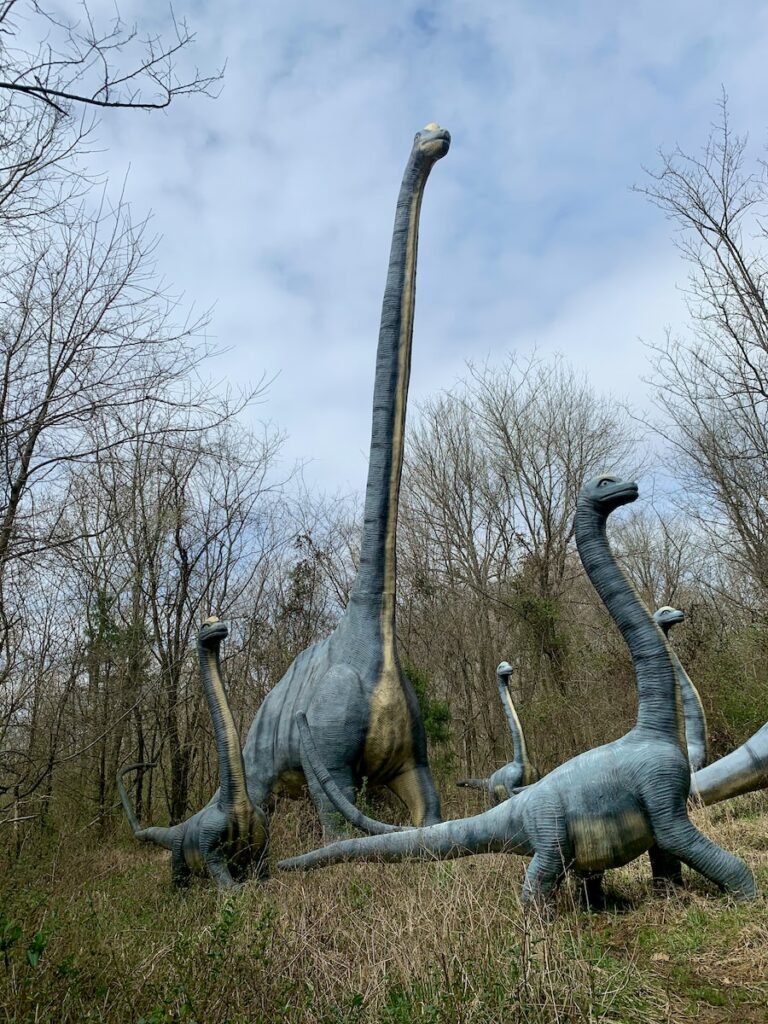Dinosaur Mating
The world of dinosaurs has always fascinated scientists and enthusiasts alike. While much attention has been given to their enormous size and ferocious nature, their methods of reproduction remain a captivating subject. In this article, we will delve into the fascinating world of dinosaur mating, exploring their reproductive anatomy, courtship displays, nesting behaviors, and mating strategies. By examining ancient clues embedded in fossil records, we can gain valuable insights into their reproductive lives, shedding light on their fascinating and diverse ways of continuing their species.

Understanding Dinosaur Reproduction
To comprehend how dinosaurs mated, it is essential to understand their reproductive biology. Dinosaurs were reptiles, and like modern reptiles, they reproduced through sexual reproduction. They laid eggs and possessed internal fertilization. However, unlike modern reptiles, dinosaurs exhibited remarkable diversity in their reproductive behaviors and strategies.
Ancient Clues in Fossil Records
Fossil records provide a treasure trove of information about dinosaur mating. Scientists have uncovered numerous fossilized nests, egg clutches, and even preserved embryos. These discoveries enable researchers to gain a deeper understanding of how dinosaurs reproduced. By studying the positioning and arrangement of eggs, as well as the presence or absence of parental care, scientists can make educated speculations about mating behaviors and nesting habits.
Dinosaurs and Sexual Dimorphism
Sexual dimorphism refers to the physical differences between males and females of a species. While it is challenging to determine sexual dimorphism in dinosaurs due to limitations in fossil evidence, some clues can aid our understanding. For example, variations in skull shape or body size may indicate different reproductive roles and behaviors between males and females.
Courtship Displays and Mate Selection
Courtship displays are an integral part of the mating rituals of many animal species, and dinosaurs were no exception. Through elaborate displays of color, sound, and behavior, dinosaurs likely engaged in courtship rituals to attract mates and establish dominance. These displays could include dances, vocalizations, and even physical combat to win the favor of a potential partner.
Nesting Behaviors and Parental Care
Research has revealed that some dinosaurs exhibited nesting behaviors and parental care. Fossilized nests and eggs provide evidence of nesting habits, such as the selection of nesting sites, construction of nests, and incubation methods. Some dinosaur species even showed signs of parental care, guarding their nests and potentially caring for their offspring after hatching, similar to modern-day birds.
Mating Strategies of Different Dinosaur Species
Different dinosaur species likely employed distinct mating strategies. Some may have formed monogamous pairs, establishing long-term bonds for successful reproduction, while others might have engaged in polygamy, actively seeking multiple mates. Understanding these strategies can help unveil the complex social dynamics and reproductive behaviors that existed in the prehistoric world.
Dinosaur Mating Rituals and Behavior
Though we can only speculate about dinosaur mating rituals based on fossil evidence and modern-day comparisons, various theories have been proposed. Some suggest that dinosaurs engaged in elaborate courtship dances, while others propose physical combat as a means of mate selection. These rituals likely played a vital role in securing mates and ensuring successful reproduction.
Reproductive Anatomy of Male and Female Dinosaurs
Determining the reproductive anatomy of dinosaurs is a challenging task. However, studying the pelvic bones and other morphological features can provide insights into the differences between male and female dinosaurs. By examining these structures, scientists can make educated estimations about how dinosaurs physically engaged in mating.
Fertilization and Egg Laying Techniques
Dinosaurs likely used internal fertilization, with males transferring sperm to females. The exact mechanisms of fertilization and egg laying are still debated among scientists. Some propose that dinosaurs laid soft-shelled eggs, while others argue for hard-shelled eggs. Examining the calcium deposits in fossilized eggs can offer clues about the composition of dinosaur eggs.
Examining Fossilized Dinosaur Egg Clutches
Fossilized egg clutches provide valuable information about dinosaur nesting behaviors and reproductive strategies. By analyzing the arrangement and number of eggs within a clutch, scientists can gain insights into how dinosaurs laid their eggs and cared for their offspring. These findings contribute to our understanding of the reproductive life cycles of dinosaurs.
Implications for Modern Understanding of Reproduction
Studying dinosaur mating has broader implications for our understanding of reproduction in general. By exploring the diverse reproductive strategies employed by dinosaurs, scientists can gain insights into the evolutionary history of reproduction and the factors that contribute to the success of species. This knowledge can be applied to modern-day research and conservation efforts, providing a deeper understanding of the biological world we inhabit.
Unveiling the ancient reproduction methods of dinosaurs is an ongoing and captivating endeavor. Through the examination of fossil records and the application of scientific techniques, we continue to unravel the mysteries surrounding dinosaur mating rituals, nesting behaviors, and reproductive anatomy. By gaining insights into their unique reproductive strategies, we not only deepen our knowledge of the prehistoric world but also enrich our understanding of the fascinating diversity of life on Earth.

